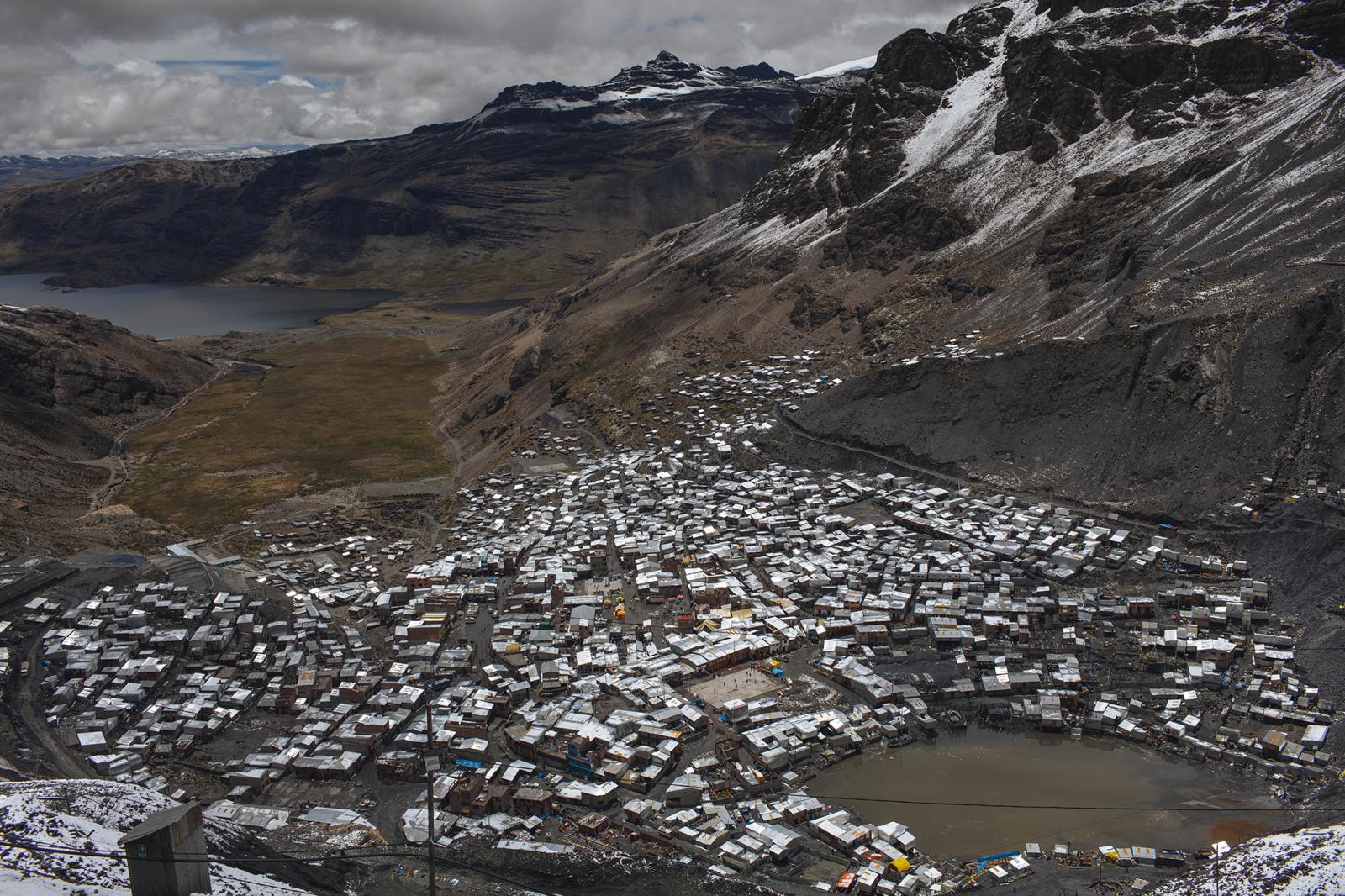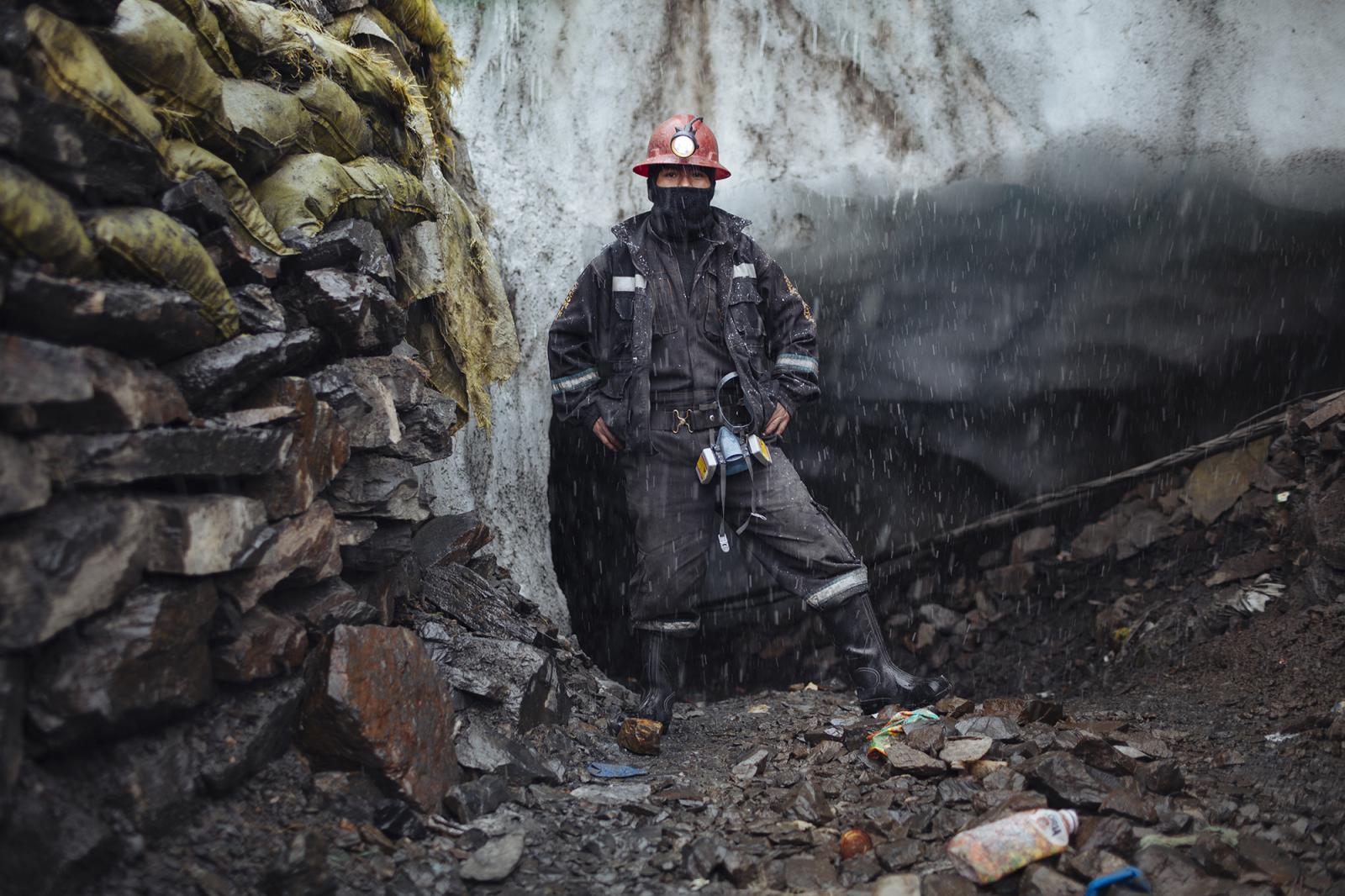Public Story
La Rinconada: this is the life of miners in the Peruvian Andes
Text and photos by Rodrigo Cruz
La Rinconada is inhabited by thousands of miners, farmers and laborers who arrived with the dream of becoming rich by finding gold under a glacier in the Peruvian Andes, considered the highest inhabited place in the world.
The city is located more than 5,000 meters above sea level. Living and working in La Rinconada is dangerous with deplorable living conditions. Just breathing is difficult because of the altitude. The intense cold is bone chilling, dropping to -23ºC at night and up to 10ºC during the day.
Approaching La Rinconada, the landscape shimmers as sunlight bounces off the zinc metal sheets of the buildings that serve as houses or workplaces. Mountains of garbage are everywhere.
Adrian Machaca has been a worker in the mine for 35 years, with little progress in his life. He continues to live in a small room made of sheet metal, which at the same time serves as a bedroom and a kitchen shared with his wife and two children. The family ventures out daily to search for gold in the mine dumps, but often find nothing.
Work at the La Rinconada mine is informal. Miners do not receive fixed payments for their work. Adrian Machaca explains,
We do not receive a salary here. We work thirty days, and then are rewarded with the right to work for four days inside the tunnel to extract mineral. We enter in a group of twenty people and if we take out say, 20 thousand soles, ($5352 USD)), we divide it among us. That means that we each earn a thousand soles, ($267 USD). This is a monthly average, but if we don't find ore, or if the vein was cut, this was bad luck, and we don’t get a penny.
The shortage of oxygen and extreme humidity makes work days strenuous. The miners risk their lives constantly inside the tunnels because of the danger of collapse, poisoning by gases emited by machinery, or facing death from dynamite explosions. Adrian Machaca estimates that men live to only 40 years of age as many are affected by diseases such as silicosis and pneumonia. As more and more machinery is used, the working conditions become increasingly complicated, drastically affecting health.
Another major problem is the mercury that is used to separate gold from the rock at each step of the process. Initially, liquid mercury is mixed with the rocks to extract the gold. Deposited on the ground, the mercury filters through the earth, eventually reaching rivers and lakes. At the end of the process, the gold buyer uses a blowtorch to heat an amalgam of mercury and gold until the mercury evaporates, leaving pure gold. The evaporated mercury hangs in the air and is inhaled by people. In this highly contaminated environment, many miners constantly suffer severe headaches and nausea caused by mercury poisoning.
The miners earn very little, forcing them to take their children to work to help sustain the family. Many women are single mothers or widows and depend on the help of their children.
Women are prohibited from entering the mine tunnels as the miners believe that no gold will be found if they enter. Hundreds of women crouch on the slopes of hills made of rock discarded from the tunnels. The women fill sacks with these rocks which they will later split with a hammer, hoping to find the gold.
La Rinconada is a lawless city. A few police officers maintain order in this city of thousands of inhabitants. Alcohol consumption is excessively high. Night clubs are located along different streets illuminated with red lights and functioning as both bars and brothels. Women work there, many of them under age from different parts of Peru.
Many children suffer from chronic diarrhea because of dirty water and inadequate sanitation. With no drainage system, human excrement runs down the city streets, giving off a constant stench. The never-fail services are cellular telephones and satellite television broadcasting soccer tournaments in Europe.
Small hotels are available for newcomers, offering rooms with one or two beds, no heating, no windows, a tiny toilet and a shared sink for washing hands and face. Public toilets and showers are found throughout the city.
The miners hope to be lucky and find gold and thereby earn money. This hope drives them to endure conditions of poverty and economic, social and health insecurity in this city of daily survival.































